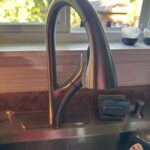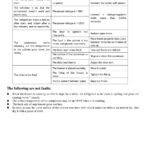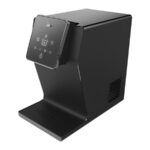To repair a scratched toilet bowl, use a fine-grit pumice stone or a non-abrasive cleaner. Gently scrub the scratched area until the scratches fade.
Toilets experience wear and tear over time, leading to unsightly scratches. These scratches can make your toilet look old and dirty, even if it’s clean. Repairing these scratches is easier than you might think. You don’t need to replace the entire toilet or hire a professional.
Simple tools like a pumice stone or non-abrasive cleaner can restore the bowl’s appearance. This guide will help you with straightforward steps to fix those scratches. Keep your toilet bowl looking new without spending a fortune or using harsh chemicals. Restore its shine and make it look spotless again.

Credit: www.reddit.com
Identifying Scratches
Scratches in your toilet bowl can be unsightly and may affect its functionality. Identifying the type and cause of scratches is the first step to repairing them. This guide will help you recognize different scratches and understand their common causes.
Types Of Scratches
| Scratch Type | Description |
|---|---|
| Surface Scratches | These are shallow and affect only the glaze. |
| Deep Scratches | These go beyond the glaze and into the porcelain. |
Common Causes
- Hard Water Deposits: These can scratch the bowl surface over time.
- Metal Cleaning Tools: Using metal brushes or scrubs can create deep scratches.
- Accidental Dropping: Dropping heavy objects can cause severe damage.
- Abrasive Cleaners: Harsh chemicals can erode the glaze and cause scratches.

Credit: www.youtube.com
Gathering Materials
Repairing a scratched toilet bowl might seem challenging, but it’s manageable with the right materials. Before diving into the repair process, ensure you have all necessary tools and products. This section will help you gather everything you need.
Essential Tools
- Rubber Gloves: Protect your hands from chemicals and debris.
- Safety Goggles: Keep your eyes safe from splashes.
- Sponges: Useful for scrubbing and cleaning the bowl.
- Soft Cloths: Ideal for drying and buffing the surface.
- Scrubbing Pads: Effective for removing tough stains and scratches.
- Toilet Brush: Helps in initial cleaning of the bowl.
Recommended Products
| Product | Purpose |
|---|---|
| Toilet Cleaner | Removes dirt and grime from the bowl. |
| Pumice Stone | Gently buffs out scratches without damaging the porcelain. |
| Porcelain Repair Kit | Fills deep scratches and restores the bowl’s surface. |
| Sandpaper (400-600 grit) | Smoothens out minor scratches and imperfections. |
Having these tools and products on hand ensures a smooth and effective repair process. This preparation will make the task easier and more efficient.
Safety Precautions
Repairing a scratched toilet bowl can be a straightforward task. However, safety should always be your top priority. Below are essential safety precautions to follow to avoid any risks.
Protective Gear
Wearing the right protective gear is crucial. Before starting, make sure you have the following items:
- Gloves: Use rubber gloves to protect your hands from chemicals.
- Safety Goggles: Wear safety goggles to shield your eyes from splashes.
- Face Mask: A face mask can help you avoid inhaling harmful fumes.
Ventilation Tips
Proper ventilation is necessary to ensure you don’t breathe in fumes. Follow these tips to keep the area well-ventilated:
- Open Windows: Keep all windows open to allow fresh air in.
- Use Fans: Place fans near the work area to circulate air.
- Ventilation System: If available, use a ventilation system to remove fumes.
By adhering to these safety precautions, you can repair your toilet bowl efficiently and safely.

Credit: www.workshop.bunnings.com.au
Cleaning The Surface
Before repairing a scratched toilet bowl, the surface must be clean. This ensures better results and a smoother finish. Follow these steps to clean the surface effectively.
Removing Stains
To start, flush the toilet. This removes loose dirt and grime. Next, apply a toilet cleaner. Ensure it covers the entire bowl. Let it sit for 10 minutes. This loosens tough stains.
Use a toilet brush to scrub the bowl. Focus on stained areas. For stubborn stains, use a pumice stone. Wet the stone first. Scrub gently to avoid further scratches.
| Materials Needed | Purpose |
|---|---|
| Toilet Cleaner | Remove dirt and grime |
| Toilet Brush | Scrub the bowl |
| Pumice Stone | Remove tough stains |
Drying The Bowl
After scrubbing, flush the toilet again. This removes the cleaner and debris. Now, use a cloth to dry the bowl. Make sure it’s completely dry.
Leave the lid open for a few hours. This allows any remaining moisture to evaporate. A dry surface ensures the repair materials adhere well.
Always wear gloves while cleaning. This protects your hands from chemicals and dirt.
Using Pumice Stone
Scratches on your toilet bowl can be annoying. But there’s a simple solution. Pumice stones work wonders to remove scratches. Follow the steps below to restore your toilet bowl.
Wet The Stone
First, get your pumice stone ready. Wet the stone thoroughly with water. A dry pumice stone can damage the toilet. Soak it until it’s fully wet.
Gently Scrub
Now, it’s time to scrub. Gently scrub the scratched area with the wet stone. Apply light pressure. You don’t want to scratch the bowl further.
Move the stone in a circular motion. This helps to evenly remove scratches. Continue scrubbing until the scratches fade away.
| Steps | Details |
|---|---|
| 1. Wet the Stone | Soak the pumice stone in water until fully saturated. |
| 2. Gently Scrub | Use light pressure and circular motions to scrub. |
Check your progress often. You don’t want to overdo it. Once done, rinse the area well. Enjoy your scratch-free toilet bowl!
Applying A Repair Kit
Repairing a scratched toilet bowl can be simple with a repair kit. These kits contain everything needed for the task. Follow the steps below for a smooth repair process.
Mixing Components
First, read the repair kit instructions carefully. Each kit may differ slightly. Usually, you’ll find two main components: a filler and a hardener.
Take a clean container and mix the filler and hardener. Use equal parts of both components. Stir them well until they form a consistent mixture. This mixture will fill the scratches and cracks effectively.
Application Process
Before applying the mixture, clean the toilet bowl thoroughly. Remove any dirt or residue. This ensures the mixture adheres properly.
Use a small spatula or applicator included in the kit. Apply the mixture directly to the scratches. Make sure to fill them completely. Smooth out the surface using the applicator.
Allow the mixture to dry according to the kit instructions. Drying times vary between kits. Once dry, sand the area lightly with fine-grit sandpaper. This helps to achieve a smooth finish. Finally, wipe the area clean with a damp cloth.
Polishing The Bowl
Polishing the toilet bowl can restore its shine. It helps to remove fine scratches. This process involves choosing the right polish and using the correct buffing technique. Follow these steps for a sparkling toilet bowl.
Choosing A Polish
Picking the right polish is crucial. Look for a non-abrasive toilet bowl polish. These polishes are gentle and won’t damage the surface. You can find them at most hardware stores.
Some common types include:
- Ceramic polishes
- Porcelain polishes
- Liquid polishes
Always read the label before buying. Ensure it is safe for toilet bowls.
Buffing Technique
Buffing is the key to a shiny bowl. Follow these steps for best results:
- Apply a small amount of polish to a soft cloth.
- Gently rub the polish onto the scratched area.
- Use circular motions to buff the surface.
- Continue buffing until the scratches fade.
- Wipe the area with a clean, damp cloth.
Remember to be gentle. Too much pressure can cause more damage.
Tip: Use a microfiber cloth for better results. It reduces the risk of new scratches.
Preventing Future Scratches
Preventing future scratches in your toilet bowl is important. It keeps your bathroom looking clean and new. Here are some tips to help you avoid those unwanted marks.
Regular Maintenance
Regular maintenance is key to a scratch-free toilet bowl. Clean your toilet weekly to remove debris. Use a soft toilet brush for scrubbing. This will prevent hard stains from forming.
Check your toilet for any cracks or chips. Fix them promptly to avoid further damage. Regularly inspect the toilet seat and bolts. Tighten loose bolts to prevent the seat from moving and scratching the bowl.
Avoiding Abrasives
Avoiding abrasives can save your toilet bowl from scratches. Never use steel wool or scouring pads. They can leave deep scratches on the surface.
Choose non-abrasive cleaners for your toilet. Look for products labeled “safe for porcelain.” These cleaners are gentle and effective. Use a soft cloth or sponge to apply the cleaner.
Here’s a quick list of items to avoid:
- Steel wool
- Scouring pads
- Hard-bristle brushes
- Bleach-based cleaners
Use a toilet cleaner with a soft formula. This reduces the risk of scratches. Proper tools and products keep your toilet bowl smooth and scratch-free.
Frequently Asked Questions
How To Remove Metal Scratches From Porcelain Toilet Bowl?
Use a non-abrasive cleaner and a soft cloth. Gently scrub the scratched area in circular motions. Rinse thoroughly.
Can You Repair Scratched Porcelain?
Yes, you can repair scratched porcelain. Use a porcelain repair kit or a mixture of baking soda and water.
How To Repair A Ceramic Toilet Bowl?
Clean the area thoroughly. Apply epoxy adhesive to the crack. Press the pieces together firmly. Let it dry completely. Seal with waterproof sealant.
How To Restore A Toilet Bowl?
Clean the bowl with a toilet cleaner and brush. Use a pumice stone for tough stains. Replace the toilet seat if necessary. Apply a sealant to fix any leaks. Regularly maintain to keep it spotless.
How Can I Fix A Scratched Toilet Bowl?
Use a pumice stone or a commercial cleaner. Gently scrub to remove scratches.
Conclusion
Restoring a scratched toilet bowl is simpler than you might think. By following these steps, you can achieve a smooth, clean surface. Regular maintenance will prevent future damage. Your toilet will look as good as new, enhancing your bathroom’s overall appearance.
Remember, a little effort goes a long way in maintaining household fixtures.




